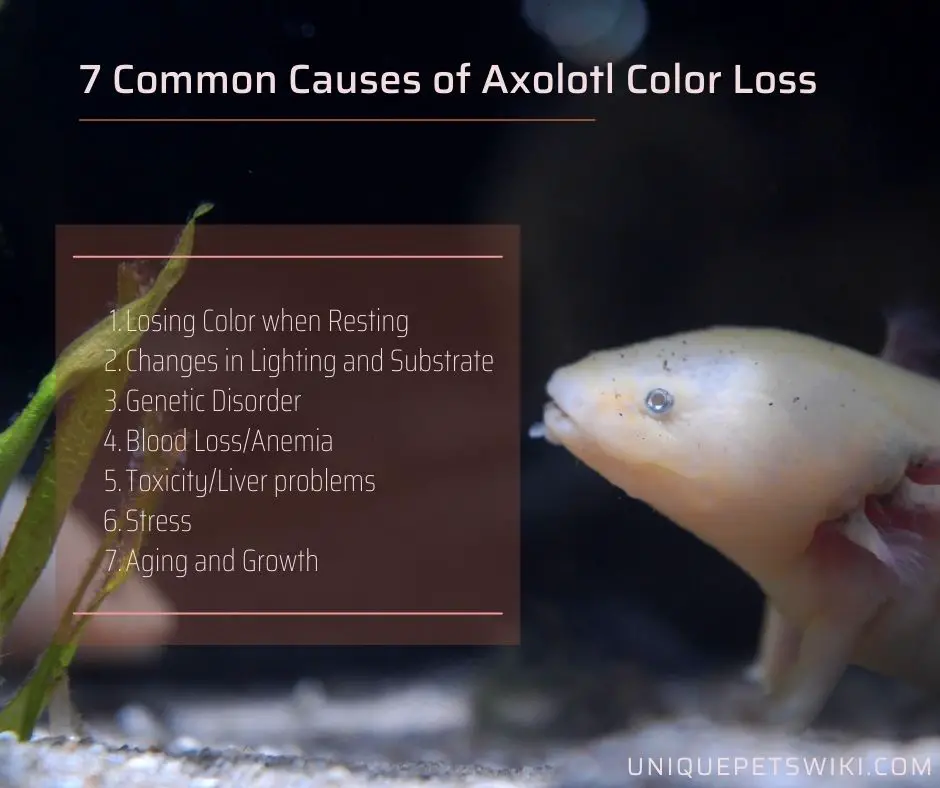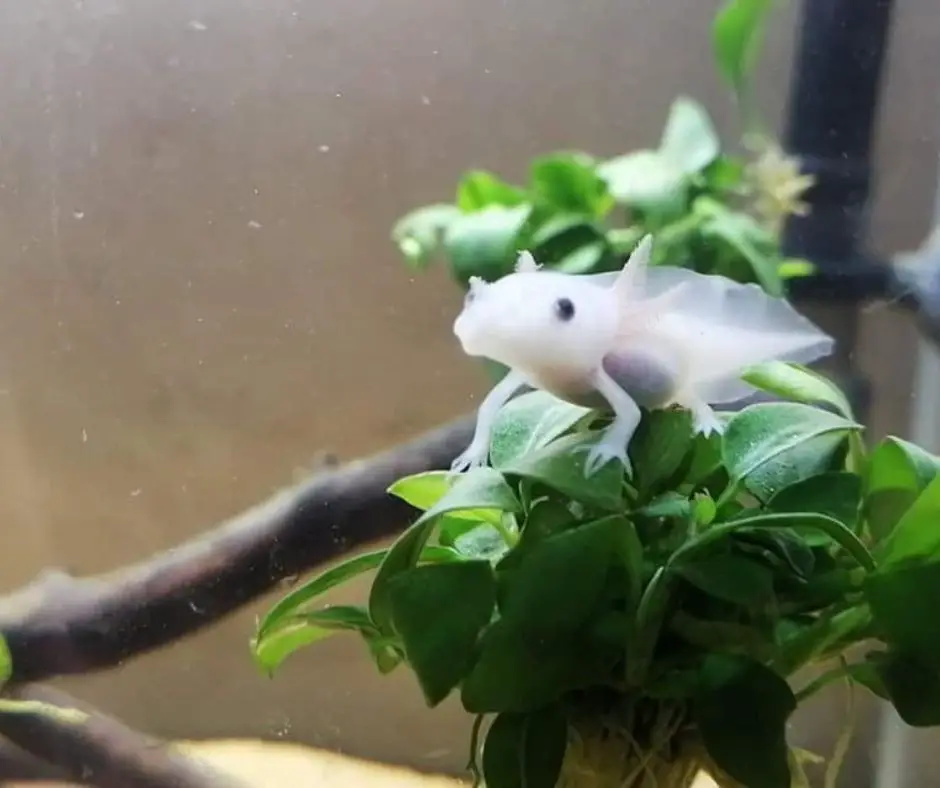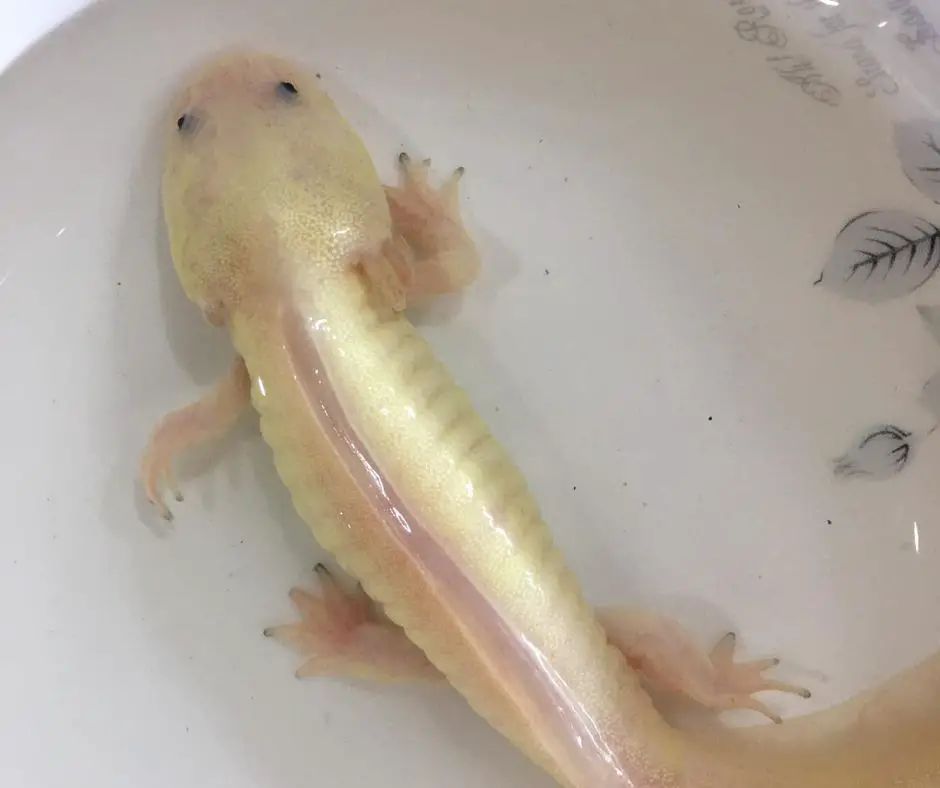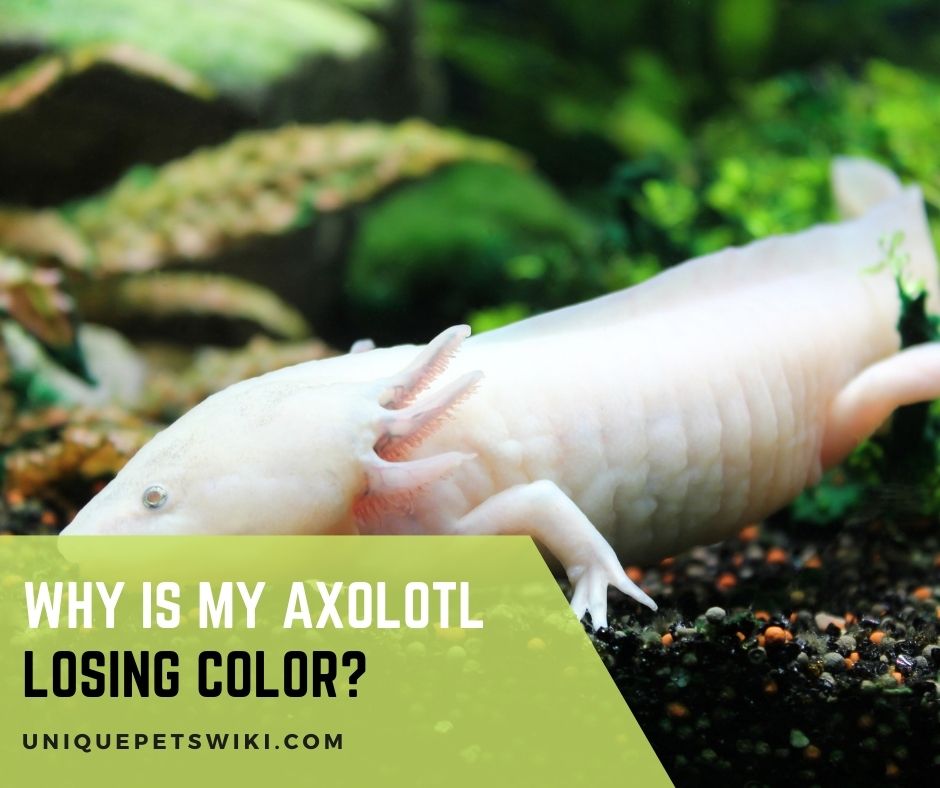Is your axolotl losing color? Perhaps it is turning white or grey or its colors may not be as bright as they were before. Maybe the color loss is only limited to one part or it is all over its body.
In any case, you want to know your axolotl is fine and that there is no health issue that may be responsible for the discoloration.
In this guide, you will find all the reasons why an axolotl may be losing color and also solutions to the problem.
Contents
Can Axolotls Change Color?
Yes, axolotls could change color. They might change their color due to environmental and/or health reasons.
Juvenile axolotls often change color as they grow and develop. Environmental factors responsible for axolotl color changes include diet and water conditions whereas developmental factors include growth, natural aging, stress, etc.
Why Is My Axolotl Losing Color?
An axolotl losing color is often a part of the normal aging process. You need not worry too much as long as your pet is eating and thriving.
However, in some cases, there could be an underlying health issue or poor water conditions that may trigger your axolotl to lose its color. Let us study these causes in detail.

Losing Color when Resting
Sometimes, your axolotl might seem lighter in color while it is resting. This may be due to changes in the blood flow rate to certain parts of the body.
Resultantly, your axolotl may appear pale as the blood flow rate is slower than it is when your axolotl is awake or swimming.
Observe your pet throughout the day. See if its coloring is restored to its normal shade when it is active.
If the color changes only occur at certain times of the day, then it is completely normal and you need not worry about it.
Changes in Lighting and Substrate
Sometimes, your axolotl may seem to change colors based on the ambient lighting. Different axolotl morphs appear to have a different hue under different aquarium lights.
For example, during the day, an axolotl may appear brighter. Likewise, some bright LED lights in your aquarium tank may make your pet reflect back those lights and appear to have different colors than normal.
Sunlight may also impact your axolotl’s color and may make it look lighter. Changes to the substrate can also create an illusion of axolotl changing its coloring.

Genetic Disorder
In rare cases, a genetic or rare disease may be the cause of drastic color changes in your axolotl.
For example, a wild-type axolotl which is usually black grayish-green with olive mottling could have a leucistic mutation that produces fewer melanocytes. As this axolotl grows, it might turn lighter in color.
Some genetic diseases also cause a loss of pigment and make the axolotl look lighter. Melanophore death (melanophores are pigment cells that permit color changes) can also result in such color changes.
Worry not: such genetic issues are very rare and even if they do occur, the effects are only cosmetic. Your axolotl should not have any other health issues.
Axolotls for Beginners
- Daria, Alina (Author)
- English (Publication Language)
- 80 Pages - 02/11/2021 (Publication Date) - Independently published (Publisher)
Last update on 2022-12-29 / Affiliate links / Images from Amazon Product Advertising API
Blood Loss/Anemia
Axolotls prefer slightly hard water. If yours has been living in soft water, it could develop anemia. This can cause your pet to take on a pale, whitish pallor. Its gills will also appear discolored.
This type of discoloration is reversible and your axolotl should return to normal once the water pH is regulated.
In some serious cases though, blood loss from a wound could result in severe anemia. If that happens, you must seek medical help right away.
Toxicity/Liver problems
If your axolotl is unable to filter out the toxins from its body, possibly due to liver or kidney issues, then its skin may take on a yellowish/greyish appearance.
This is a serious condition and you need to consult with an aquatic vet regarding the same.

Stress
Stress is another reason why an axolotl might change its color. Changes in its environment are the most common cause of axolotl stress.
Factors like improper water conditions, the introduction of another tank mate, irregular feeding times, etc. can all result in stress.
Over time, the stress will be noticed in the form of various symptoms including loss of its color.
Other symptoms include swimming restlessly in an energetic frenzy. This too can increase blood flow and make the color appear darker than usual.
Aging and Growth
As mentioned before, natural aging and growth are also a cause of axolotl changing their color.
Axolotls, in captivity, live for an average of 10-15 years. Some well-cared-for axolotls are even known to live for 20 years!
Axolotls can be considered as ‘seniors’ by the time they are 8-10 years old. The color change could start from the time they are 4-5 years of age. Most adult axolotls become darker as they age. Therefore, it is normal to lose the original color.
What Should You Do If Axolotl Loses Color?
If your axolotl seems fine otherwise, is eating well and swimming normally, then you need not worry about its color loss. However, if you see other symptoms, then use the following steps:
Observe Your Pet
Monitor your buddy over the next few days. Sometimes, the color loss may be limited to certain parts of the day.
Changing the tank water conditions often restores the color as the external lighting and water parameters get more comfortable for your pet.
Monitor your pet for injuries, wounds, or lesions on its body. If you notice these, please see your vet right away.
Continue Testing the Tank Water
Use a water API test kit to test the pH, temperature, ammonia, nitrates, and nitrites. Make 50-70% water changes regularly and, if needed, use a filter to remove harmful toxins.
API Water Test Kit
- Contains one (1) API FRESHWATER MASTER TEST KIT 800-Test Freshwater Aquarium Water Master Test Kit, including 7 bottles of testing solutions, 1 color card and 4 glass tubes with cap
- Helps monitor water quality and prevent invisible water problems that can be harmful to fish and cause fish loss
- Accurately monitors 5 most vital water parameters levels in freshwater aquariums: pH, high range pH, ammonia, nitrite, nitrate
- Designed for use in freshwater aquariums only
- Use for weekly monitoring and when water or fish problems appear
Last update on 2022-12-30 / Affiliate links / Images from Amazon Product Advertising API
Make Sure Your axolotl is Not Stressed
If needed, move your axolotl to another tank. Avoid overcrowding the tank and ensure that it is big enough for all tank inhabitants.
The best solution to eliminate stress in axolotls is to improve the water conditions. If required, add a water chiller and a filter if you don’t have them already. Continue with the water changes.
Make dietary changes, but only after consulting your vet. Sometimes, foods like bloodworms, daphnia fish, pieces of salmon, etc. can help improve its skin color
Key Takeaways – Why Is My Axolotl Losing Color?
Many factors can cause an axolotl to lose color. It may be due to natural factors like aging, growth, lower blood flow while it is at rest or a normal genetic issue.
Changes in lighting or substrate could also give an illusion of your axolotl losing color.
Sometimes though, serious health issues like stress, skin disease, anemia, or liver issues can also be a cause.
We hope this guide helps you determine the root cause of the problem and also take corrective steps for it.


